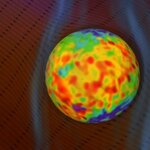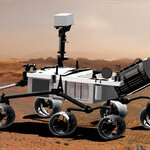Space

Vitamin Store = Cheap Lab Gear?
One part of assembly is making sure all my circuits are properly shielded and not sending out interfering signals. A decent magnetometer-- a meter to measure magnetic fields-- costs $200-$700 dollars. While at the vitamin shop, I beheld a CellSensor, a device that measures and traces cell phone and power line RF (radio frequency) emission. It has a range of milliWatts (for RF radiation) and milliGauss (for magnetic fields). And it was discounted to $20.
So, for $20, I now have a new addition to my test rig and construction setup! …
This is not about a Mayan 2012 apocalypse. This is about the 9th century Mayan apocalypse, as documented by NASA. It's also about modern global warming. So there's plenty of doom to go around.
Let's first cover the '2012 apocalypse', a fabrication based on pseudoscience. Modern Mayans are annoyed at the 2012 rumors. The misinterpretation of their ancient culture-- that somehow an apocalypse is predicted for 2012-- has finally reached its nadir. Hollywood is going to make a movie about it. Imagine your own history being reduced to a single 90-minute…

The 'heliosphere', the name given to the region of the sun's influence, may not have the comet-like shape predicted by existing models, say researchers.
As the solar wind flows from the sun, it carves out a bubble in the interstellar medium. Models of the boundary region between the heliosphere and interstellar medium have been based on the assumption that the relative flow of the interstellar medium and its collision with the solar wind dominate the interaction. This would create a foreshortened "nose" in the direction of the solar system's motion, and an elongated "tail" in the opposite…

You know, I'm tired of hearing about how the Mars Exploration Rovers are so cute, and spunky, but their successor Mars Science Lab is big and ugly. MSL isn't supposed to be cute, it's supposed to be awesome.
Just how awesome, you ask? I'll tell you how awesome.
For starters it's huge: 7 feet tall and almost 2000 pounds. The instrument package on the end of its 8-foot arm is about the same size as the 1997 Mars Pathfinder rover. In fact it's so big that the famous airbag landing system used by Pathfinder and both MERs just won't work. There just aren't airbags strong enough to cushion the…
Okay, the world is not going to end in 2012. The source of this info? The Mayans. The living Mayans. You didn't think all that's left is stone tablets, did you? In that AP news report, a Mayan Indian Elder named Apolinario Chile Pixtun, among others, gives the straight scoop.
One. It's not the end of the world
Two, the supposed stone that dates an Apocalypse in 2012? It's with some stones that cover events in 4772 as well. So if there is a Mayan Apocalypse, it's, umm, a non-apocalyptic one.
And three, my favorite quote from the article. "…

I'm sitting at "Beyond the Decade: The Future of International Astronomy", a conference today at the National Academies. The conference is small (53 people so far) but rich in material, providing a crunchy look at where astronomy is heading.
Astronomy is a feriociously collaborative field. I would call it the canary in the international affairs coal mine. Many countries that have a delicate political relationship have managed to work together on astronomy projects, when a military, economic or social project would certainly be seen as too controversial and destabilizing.…

I now own half a satellite... and in a way, you do to. The Scientific Blogging "Project Calliope" satellite order has been placed! Thanks to Hank's SB contribution, we have the 'science' half covered. The other half of the satellite is up to the music community, and I'll let you know as soon as that's signed, sealed and delivered.
Half is crucial. WIth half, we are 'go' for construction. With our first half payment, we get:
the actual hardware
all the detailed tech specs
a slot on the launch schedule
Being on the launch manifest is great from a project…

Want a chance to see the water on the moon in real life? Wake up early Friday morning (if you live in the Americas), and get out your telescope.
NASA’s Lunar Crater Observation and Sensing Satellite (LCROSS) is being crashed into the moon, on purpose, along with the now empty 2.2-ton rocket that launched it this past June. The rocket will crash first, around 7:31am EDT, into the crater Cabeus in the south polar region. It should produce a plume of debris over 6 miles high. That plume is what you might be able to see with your telescope.
The LCROSS will be right behind, having separated from…

Just why do we have a space station, anyway? That's a question of relevance, because it turns out we might not have one after 2015. The International Space Science Station (ISS) is a football-field sized structure able to support six people 220 miles above us. It is a symbol of international cooperation, a marvel of technology, a new site for tourism and, to some, a project to be terminated in 2015.
What we've gotten from it? Some intangibles, some useful stuff.
advancing our space capability
increasing our limits on how long people can live in orbit
keeping nuclear scientists from going…

An article in this week's edition of Nature adds to the mysteries surrounding 'dark matter'. Should we abandon this enigmatic concept of invisible matter that exerts gravitational attraction but is otherwise undetectable? Could it be that we simply do not understand the long-range behavior of gravity?
Galaxies rotate. Each of them would fly apart and create a cosmic mess, were it not for the gravitational forces that bind together the many billions of stars and large quantities of dust and gas that constitute a typical galaxy like our Milky Way.
By applying Newton's law of gravity to the…